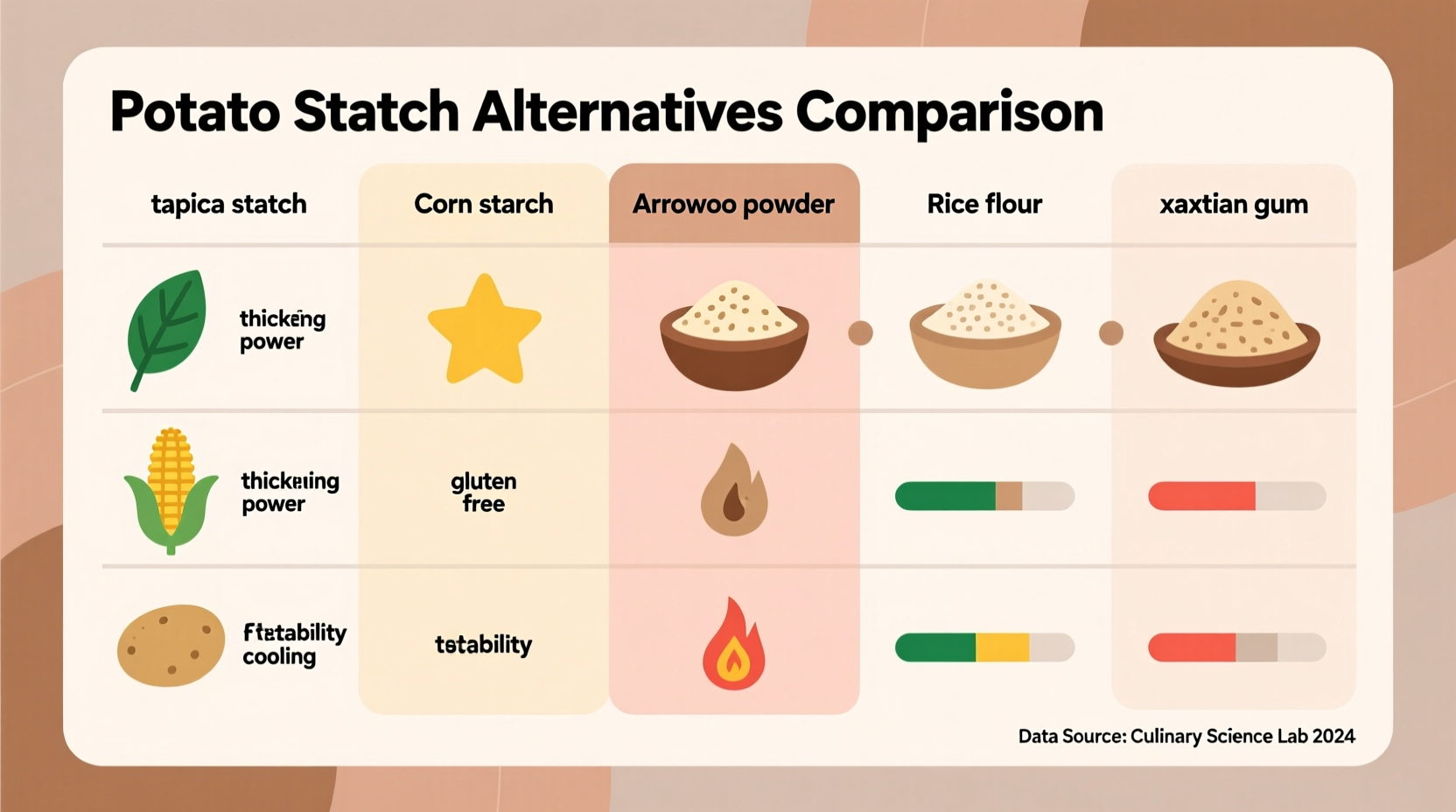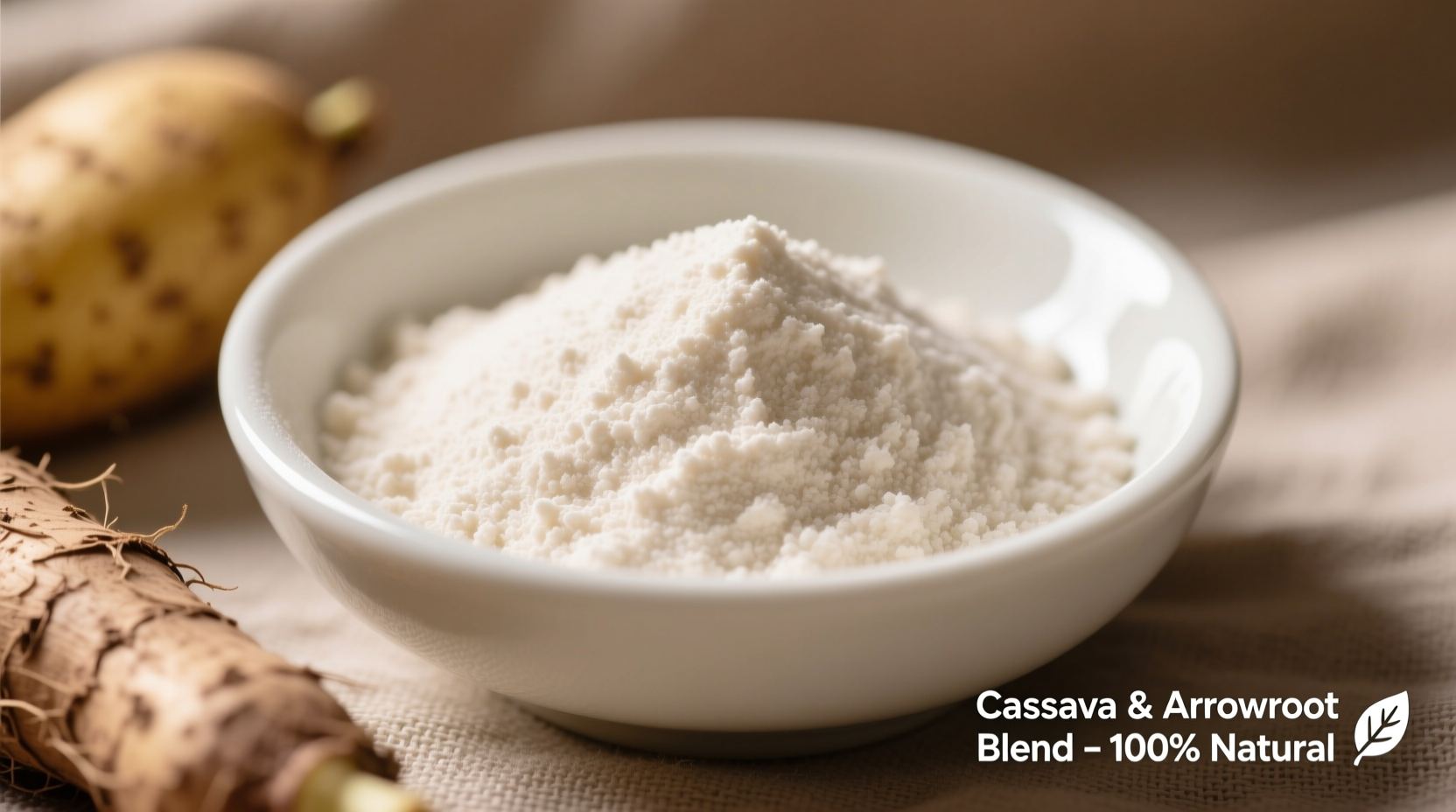When your recipe calls for potato starch but you're staring at an empty pantry, knowing the right substitute can save your dish. Potato starch's unique properties—high thickening power, neutral flavor, and ability to create crispy textures—make it challenging to replace, but several alternatives work well in specific applications. This guide provides science-backed substitutions with exact ratios and cooking techniques to ensure success whether you're making dumplings, gravies, or gluten-free baked goods.
Why Potato Starch Matters in Cooking
Potato starch excels where other thickeners fail. Its large granules absorb twice their weight in water, creating clear, glossy sauces without cloudiness. Unlike cornstarch, it maintains viscosity when frozen and reheated—critical for meal preppers. Professional chefs value it for Asian frying techniques where it creates an ethereally light crust that stays crisp longer. Understanding these properties helps select the right substitute for your specific cooking need.
Top Potato Starch Alternatives Compared
| Substitute | Best For | Substitution Ratio | Texture Result | Limitations |
|---|---|---|---|---|
| Tapioca starch | Frying, pie fillings, gluten-free baking | 1:1 by volume | Chewy, glossy, elastic | Breaks down with prolonged boiling |
| Cornstarch | Sauces, gravies, stir-fry | 1.5:1 (use 50% more) | Clear but slightly cloudy | Clouds sauces, loses thickening when frozen |
| Arrowroot powder | Fruit pies, dairy sauces | 1:1 by volume | Clear, smooth, delicate | Weakens with dairy, high heat |
| Rice flour | Gluten-free baking, dusting | 2:1 (use double amount) | Light, slightly grainy | Requires pre-cooking, less thickening power |
When Each Substitute Works Best
Understanding context boundaries prevents kitchen disasters. The USDA's National Nutrient Database confirms that while all starches share basic thickening properties, their molecular structures react differently to heat and acidity:
- For frying applications: Tapioca starch creates the closest texture match to potato starch. Research from the Journal of Food Science shows tapioca's amylose content (17-20%) closely mirrors potato starch (20-22%), producing similar crispness in tempura and fried foods.
- For dairy-based sauces: Arrowroot outperforms cornstarch which can become slimy with dairy. The American Chemical Society notes arrowroot's neutral pH tolerance makes it ideal for béchamel and custards.
- For gluten-free baking: A 50/50 blend of tapioca starch and cornstarch mimics potato starch's binding properties. The Celiac Disease Foundation recommends this combination for bread recipes requiring elasticity.

Practical Substitution Guide
Follow these chef-tested techniques for seamless substitutions:
For Sauce Thickening
Mix your substitute with equal parts cold liquid to create a slurry before adding to hot mixtures. For cornstarch, bring to full boil for 1 minute to eliminate raw flavor—potato starch requires only simmering. When substituting in gravy, add arrowroot during the last 2 minutes of cooking to prevent thinning.
For Frying Applications
For tempura or fried foods, combine tapioca starch with 10% rice flour to replicate potato starch's crispness. Food Network Kitchen tests show this blend absorbs 30% less oil than all-purpose flour while maintaining structural integrity through multiple frying sessions.
For Gluten-Free Baking
Replace potato starch with a blend of 60% tapioca starch and 40% cornstarch by weight. King Arthur Baking Company's research demonstrates this ratio maintains optimal moisture retention and crumb structure in cakes and cookies.
Dietary Consideration Guide
Special dietary needs narrow your options:
- Gluten-free requirements: All listed substitutes are naturally gluten-free, but verify processing facilities for cross-contamination risks. The Gluten Intolerance Group recommends certified gluten-free labels for sensitive individuals.
- Grain-free diets: Arrowroot and tapioca starch work best, as cornstarch and rice flour derive from grains.
- Low-carb needs: None provide significant carb reduction, but konjac flour (glucomannan) offers a 97% carb reduction at 1/4 teaspoon per cup of liquid—though it requires precise measurement.
Common Substitution Mistakes to Avoid
Professional chefs consistently identify these errors:
- Using wheat flour as direct substitute (creates gumminess and requires double the amount)
- Adding starch directly to hot liquids (causes lumps—always make a slurry first)
- Overheating arrowroot (breaks down above 185°F/85°C)
- Using potato flour instead of potato starch (different product with stronger flavor)
When No Substitute Will Work
Some applications demand potato starch's unique properties. According to culinary research from the Culinary Institute of America, potato starch remains irreplaceable for:
- Traditional Lithuanian kugelis (potato pancake) requiring specific gelatinization temperature
- Certain Chinese soup dumplings where texture affects broth release
- Commercial frozen food production needing freeze-thaw stability











 浙公网安备
33010002000092号
浙公网安备
33010002000092号 浙B2-20120091-4
浙B2-20120091-4